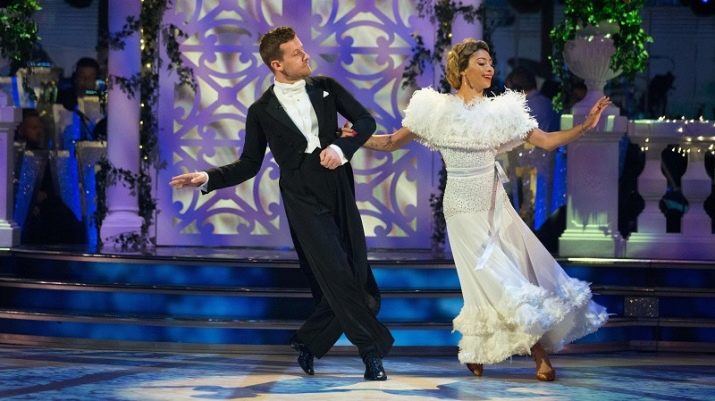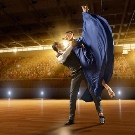All about ballroom dancing
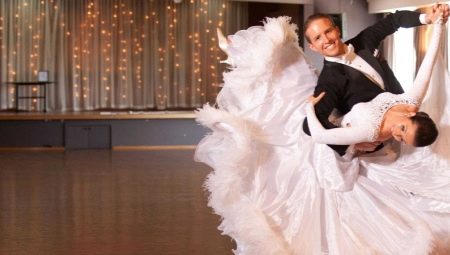
Sports ballroom dancing is the embodiment of expression and delicacy of movement. This is not a cheap pleasure for those who are engaged, but it also means getting into an incomparable world. The competition is high, the workouts are long and frequent, but the costumes, make-up, the performances themselves cause a sacred tremor in everyone who is associated with the world of ballroom dancing.
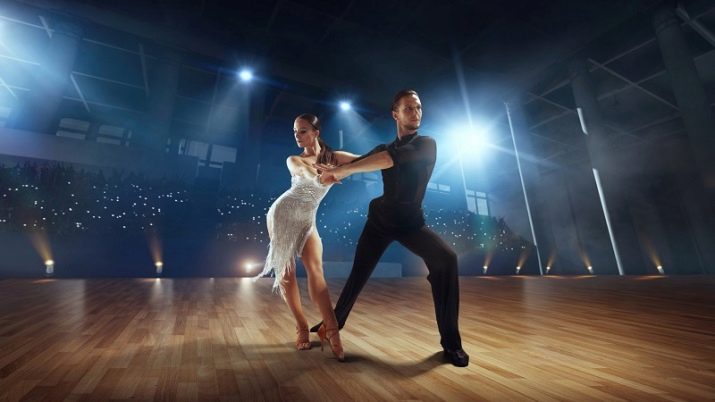
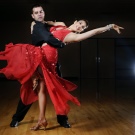
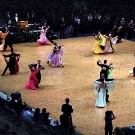

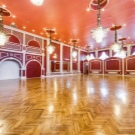
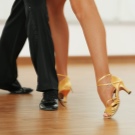
History
If you go from afar, then back in the 15th century in Italy and France, countries where aristocrats were enthusiastically interested in folk dancing, something initial appeared. The initial point of reference for the emergence of ballroom dancing. And pretty quickly the hobby began to spread throughout Europe. In the 17th century, mastery of dance was considered good form. In Paris in 1661, the Royal Academy of Dance was founded, which imposed a ban on improvisation, regulating costumes and the order of performance of dances. At the same time, balls appeared, which the commoners, of course, could not get to. Strangely and smoothly, folk dances turned into aristocratic ones.
Then there were public balls, where anyone could go, as long as the dress code was observed and there was an opportunity to pay for the entrance ticket. Gavotte, bure, gigue - names that are familiar only to specialists or people who are keen on dancing. Now they have little to do with current traditions in ballroom dancing. But everything developed according to plan. Cancan, polka and gallop soon appeared.
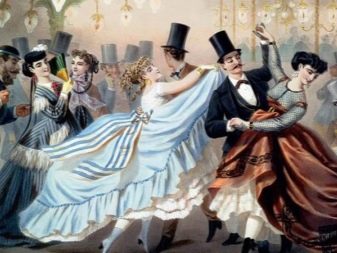
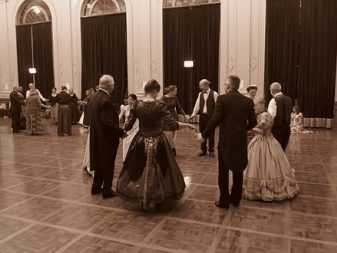
By the way, in Russia, under the reformer Peter I, ballroom dancing became an obligatory part of the curriculum in state institutions. A dance master was discharged from abroad so that the training was literate, and the teacher had the necessary qualifications. This is how the Russian performing school was formed. In the 19th century, balls and masquerades became popular, that is, there were undoubtedly places where the knowledge gained was applied.The romantic era of balls is associated with the names of Strauss and Schubert: their music largely determined which dances were in favor.
But the closer the XX century was, the more the dance lost its elitism, the more widespread it became. But certain types retained their belonging to the high society: for example, waltz, mazurka and polonaise subsequently formed ballroom dance programs. America began to dictate its dance foundations at the intersection of the 19th and 20th centuries: North American Boston, Charleston, blues, quickstep and two-step took over the Old World. Rumba, tango, samba "came" from South America.
These directions became part of European life, and it was only enriched by the sensuality of South American dances.
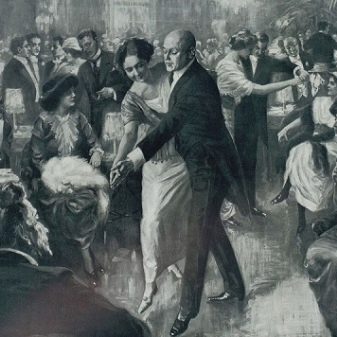
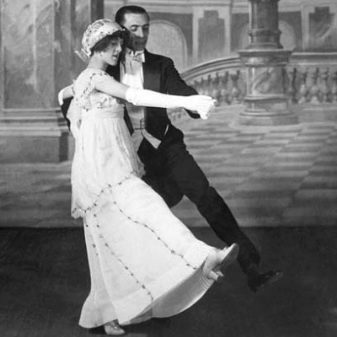
And in the 20th century, a turning point came in the field of dance art: there was a request for the designation of uniform assessment criteria, clear regulations. In Britain, the "Imperial Society of Dance Teachers" arose, and it developed the standards of the art. All known dances were standardized, that is, the main steps, figures, drawing were determined. Tango, waltz, fast and slow foxtrot formed the basis of the ballroom dance culture of that time.
So the basis for competitive options appeared, now it was possible to compete in them. More precisely, it was then that dances began to be divided into sports and social. Dance sports competitions have been held in Britain since the 30s of the last century. And for another 20 years, samba, rumba, pasadoble, jive and cha-cha-cha were added to waltz, tango and foxtrot. There are now two programs: Latin American and European.
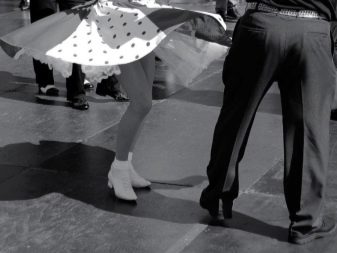
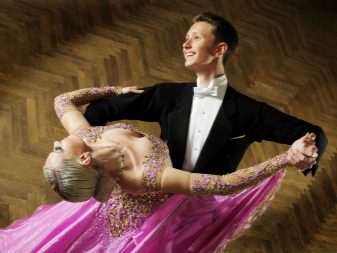
Latin American dances
All the passion and sensuality of ballroom dancing lies in the directions that were born in Latin America. They are very subtle and very expressive, frank and bright. At the same time, it is impossible to find people who will equally perform the same dance, because, despite all the regulations and standards, these dances are very personified.
Pasadoble
It is considered a Spanish folk dance, and translates as "two steps". It appeared (more precisely, it is generally accepted that it appeared) in 1920. It resembles a one-two (or left-right) march. Very similar to bullfighting moves. The dancer moves like a bullfighter, he is associated with the latter, and the music clearly gives rise to an analogy with the procession in front of the bullfight. Despite its Spanish roots, the dance has become very popular in France. Many of the components of paso dobl have French names.
What are the features: the dancer's chest is raised high, the head is strictly fixed, the center of gravity of the body is in front, most of the movements begin from the heels. At the beginning of the dance, fanfare will sound (the beginning of the bullfight), at the second stage, the music reflects the fight of the bullfighter and the bull, the music of triumph and jubilation ends the number, because the fight is over. A typical male act that keeps the viewer in constant tension.
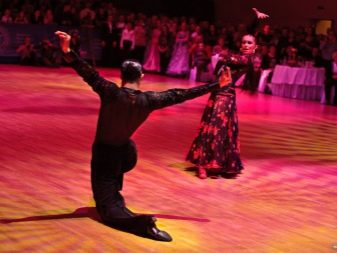
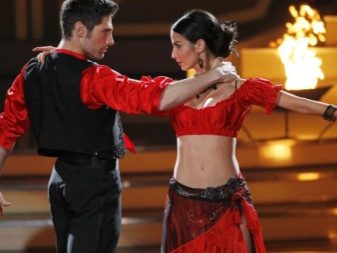
Samba
This is a Brazilian dance, as hot as the beaches of Brazil and as the temperament of the locals. The samba appeared in the state of Bahia in the 19th century. And it was the dance of the poor, because the nobility at that time preferred the waltz and square dance. Everything Portuguese and African is mixed in samba. At first it was a dance in a common circle, there was no contact between partners. But gradually they began to dance samba in pairs. And at the beginning of the 20th century, it was performed at one show in Paris, and it became a sensation. The popularization of samba has begun. At home, in Rio, the first samba school opened in 1928, after which they began to appear one by one. And Paul Bush wrote an instruction book for learning dance, detailed and understandable.
In 1933, the first samba competitions were held, and soon they began to dance her at carnivals. Now it is impossible to imagine the enchanting Brazilian carnival without samba. By the way, the sister of Elizabeth II, Princess Margaret, took part in the popularization of Latin dance. She loved shocking, extravagance, and hot samba came to her taste.Already in 1956 the dance was included in the competition program. Therefore, it is to this year that his appearance is tied. Samba can be performed in pairs or singly. If the dance is in pairs, the costumes will be more restrained. Women will appear in dresses with open shoulders, decorated with sequins, fringes and other decor. The man's suit is more laconic: a plain shirt and trousers (but it is possible with embroidery and rhinestones).

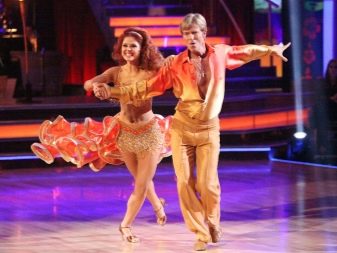
Cha-cha-cha
Cha-cha-cha is a story from Cuba, where the English folk dance country dance first appeared. This happened back in the 18th century during the occupation of Havana by the British. Cubans fell in love with British dance and over time adapted it to their temperament and traditions. And after the independence of Cuba was declared, the planters rushed there along with their slaves. And these slaves brought African dances to the island. This is how the adapted English country dance and the dances of African slaves were mixed. Danson appeared. He, in turn, after some time connected with the rumba (began to be called mambo), but was too fast and expressive. The dancers captured its beauty, but noted the difficult nature of the dance.
And then Enrique Horrin, a local composer, came up with a new rhythm - mambo-rumba. The composition, written in 1949 and officially named La enganadora, was the music that started the cha-cha-cha. This music had a distinct rhythm, no intro, and all the orchestra members could sing in unison. Cubans quickly fell in love with new music and new dance, performed in every street cafe. And since the Americans often rested in Cuba, they soon picked up the cha-cha-cha, and so he saw a big light. Now the dance is not quite what it was originally.
Previously, sliding steps, for example, were danced on bent legs, now they are performed on straight lines. But this dance is easier to perform than many, it is good for beginners.
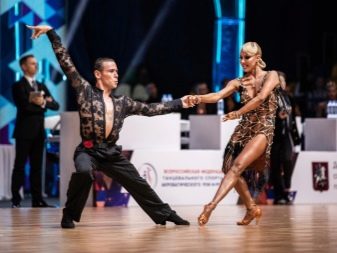
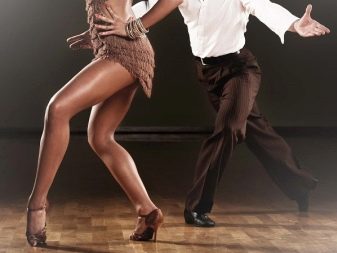
Jive
Jive can be translated as "lying" or "cocky, impolite conversation." This is an American dance that appeared in the 19th century, but conquered the world after the Second World War. It was difficult, technical, and therefore dangerous, because in many places it was forbidden. But over time, he became competitive, the audience fell in love with the insane energy of the performance. The jive consists of two parts: the first is the presentation of the couples participating in the competition, the second is the dance itself in original costumes. It is about freedom of self-expression, about an impulse of the soul.
By the way, after the death of the Queen of England in 1901, the popularity of the dance became enormous. Although non-professionals for a long time looked at him with skepticism: he seemed to them simple, backward. Over time, the jive changed, became more complex. Today it is performed in an international style or in a swing style. In competitions, he is placed last so that the return of the dancers is maximized.
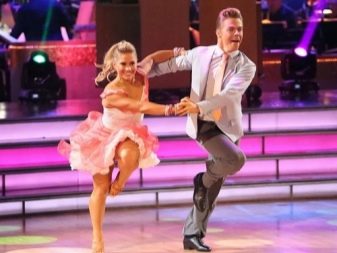
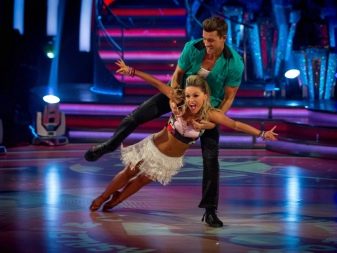
Rumba
The ritual dance of Africans is where the passionate rumba began. In the 19th century, it was brought to Cuba, and this Spanish word is translated as "way". The full-fledged version of the dance was developed by Pierre Lavelle, the most famous London master, after the Second World War. This dance has a deep emotional connotation, which is complemented by dramatic music.
It is not easy to dance: steps are taken on 2, 3 and 4. At each step, the knees bend and straighten, and turns are also made between the count. Each step is performed from the toe, the weight of the body is always in front. All gestures and movements are full of passion and love, and in this dance there is also a characteristic Latin style of hip movement. You cannot master the rumba in a couple of lessons, and you cannot learn it from scratch at home.
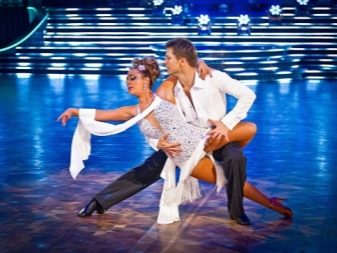
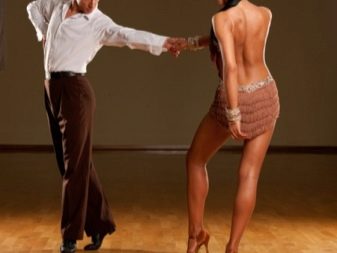
European dances
The ballroom dancing program can be European as well. Consider the main dances included in it.
Tango
Many people associate tango with Argentina: that's right, there this direction has become extremely popular. But it originated in Spain, a very long time ago, in the XIV century. The dance received official recognition only at the beginning of the 20th century after its triumphant conquest of the main European capitals.Then the dance became prestigious, they were ready to spend money on its costumes.
Today it is no less popular, associated with love, passion, drama. For one performance, artists must live a whole story that will be understandable to every viewer. Tango is performed in two or four quarters.
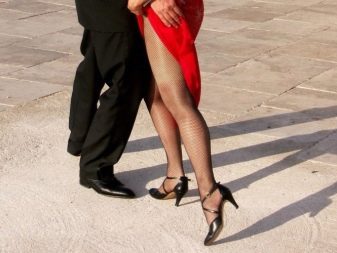

Quickstep
The dance, which translates as "fast step", is performed easily and gracefully. It is characterized by the seeming weightlessness with which the dancers soar over the stage. By the way, it is considered a kind of foxtrot. A quickstep appeared during the First World War in New York. First, African dancers performed it at the American Music Hall, and then he left for the dance halls.
The dance is performed in four quarters, the first and third beats of the measure are accented. The music sounds fast, but there will be both fast and slow combinations in the room. Since the basic steps are easy to learn (and this is not an exaggeration), quickstep lessons are often taken by adult beginners.
The main elements of the dance are the chasse and the main step. And also turns, coups, jumps and bounces.
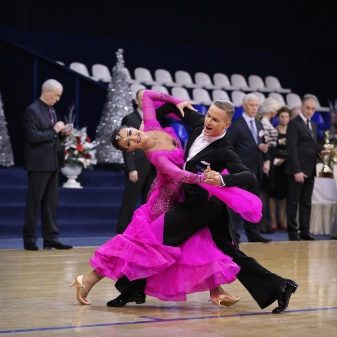
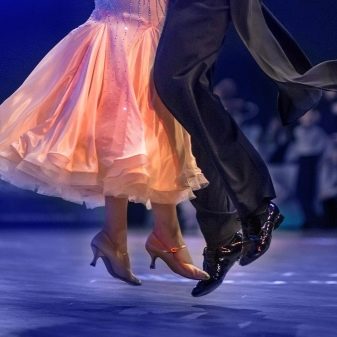
Viennese waltz
The Vienna Waltz, despite its name, is associated with Germany. The first dance of the three-beat size of the volta appeared in the 13th century (or even earlier), and then the dance of the walzen with the size of three-quarters appeared in Germany. When combined, they turned into what is commonly called the Viennese waltz. At first it was very slow, and only the legendary Strauss gave him a different rhythm, he also glorified the dance (that's why he became Viennese). The dance became popular thanks to its frankness: its predecessors looked very chaste, and in the Viennese waltz, the partner hugs the partner. It was a breakthrough.
The Viennese waltz is characterized by a fast tempo, with an emphasis on the first beat of a measure. At the same time, it is performed smoothly, gracefully, nobly. It is the European version of the waltz that is performed at competitions. The number of obligatory figures in it, by the way, is small, therefore they compete not so much in them as in the artistry of performance. The work of the head and feet, swaying, as well as the interaction of the dancers are important.


Slow waltz
It appeared in the Middle Ages, went a long way from rejection to insane popularity, and became famous also thanks to Strauss. In the 20th century, the Boston waltz appeared in England, which later conquered America. Now it has turned into a slow waltz, which is part of the competitive ballroom dance program.
Amateurs also try to dance it, they do it at weddings and graduations. Learn the starting position, basic step, waltz track. But the requirements for professionals are different, here you need perfect balance, excellent coordination of movements. It is difficult to achieve this at home.

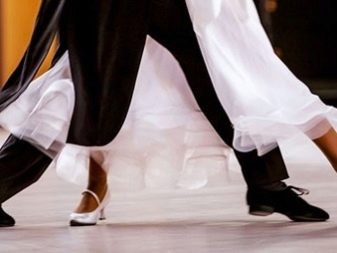
Slow foxtrot
The foxtrot dance was invented by Harry Fox, who presented his program in 1913 in New York. Weightlessness of steps, lightness and airiness conquered the West, and it was hard not to notice how easily partners become literally one whole in it.
This dance was what determined the future of the sports ballroom direction. He became the impetus that transformed and developed him. The combination of steps, fast and slow, gave rise to many variations in performance, and the large number of possible rhythmic combinations made the dance especially interesting. It is slow, calm and especially effective in terms of attracting an audience.
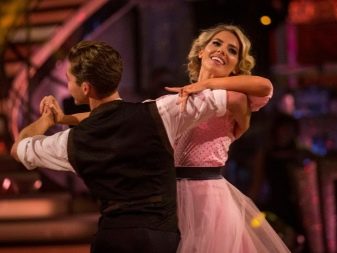
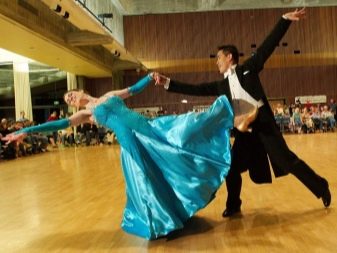
How can you learn to dance?
Of course, the easiest way is to enroll in a dance school, you don't need to think that this is only available to children. Quite a few vocational schools set up groups especially for adult beginners. Yes, you can't make a career in this, but you can get tremendous pleasure, and it is also good for your health. If it’s scary, there’s no school nearby, or you’re just not sure if it’s worth getting into this seriously, you can try video tutorials. They are available, there are a lot of them on the Internet. With such a detailed and visual instruction, you can try to learn how to dance at home.
Of course, the effect cannot be compared with the lessons of the pros, but nevertheless, the first knowledge, some idea of the dance, is quite possible to get. And only if after the first lessons (whatever they may be) the passion for ballroom dancing has not disappeared, you can buy special shoes, clothes, immerse yourself in this world with your head.
In terms of the saturation of classes, this is comparable to intensive training, which you should be prepared for.
